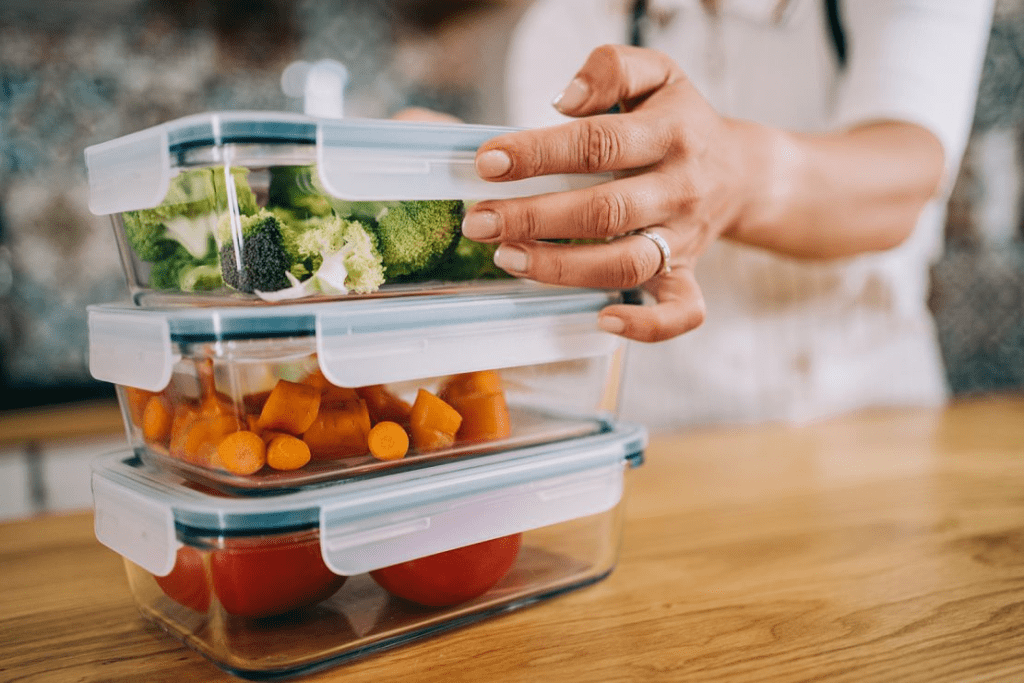The microwave is an essential kitchen appliance for many of us. It’s quick, convenient, and perfect for reheating leftovers or whipping up a meal in a hurry. However, not all foods belong in the microwave. Some can create a mess, lose their texture, or even become hazardous when exposed to microwaves. To help you avoid common pitfalls, here’s a list of foods that should never be microwaved and why.

1. Foods with High Fat Content: The Case of Splattering and Uneven Cooking
High-fat foods, such as bacon, sausages, and some cuts of red meat, can be a disaster in the microwave. The fat in these foods tends to heat unevenly, causing it to splatter all over the inside of the microwave. Not only does this make a mess, but it also leaves you with unevenly cooked food.
Moreover, cooking these items on a stovetop or in an oven is a better option if you want to achieve a crispy texture. The microwave’s inability to provide consistent high heat means that fat-heavy foods can turn out rubbery or greasy, which is often less appetizing.
2. Eggs in Their Shell: The Risk of Explosions
One of the biggest microwave no-nos is putting a whole egg in its shell inside the appliance. The reason? When microwaved, the egg heats up quickly, causing steam to build up inside the shell. This can lead to a literal egg-splosion, resulting in a messy cleanup and potentially harming your microwave.
To safely cook eggs in the microwave, crack them into a microwave-safe dish and pierce the yolk with a fork. This allows steam to escape and reduces the risk of explosions. You can even scramble or poach eggs in the microwave if you follow these steps.
3. Processed Meats: A Nutritional and Textural Concern
Microwaving processed meats, like hot dogs, deli meats, or sausages, might seem convenient, but it comes with downsides. The microwave can cause uneven heating, resulting in cold spots and hot spots. Additionally, processed meats tend to lose some of their nutritional value when exposed to high microwave temperatures, especially if they contain preservatives.
For a more appealing texture and even heat distribution, try grilling, pan-frying, or heating processed meats in an oven. This approach not only preserves more nutrients but also enhances their flavor and consistency.
4. Leafy Greens: When Healthy Turns Hazardous
While leafy greens such as spinach, kale, or lettuce are packed with nutrients, they don’t fare well in the microwave. The high heat can make these greens wilt, turning them soggy or mushy. Moreover, some leafy greens contain nitrates, which can convert into potentially harmful compounds when exposed to high microwave temperatures.
For better results, consider sautéing or steaming your leafy greens on the stovetop. This way, you can retain their nutrients and enjoy a fresher taste and texture.
5. Certain Fruits: Avoiding the Microwave Mishap

Fruits are generally best enjoyed fresh, but there’s a particular reason to avoid microwaving them—especially high-water content fruits like grapes, watermelon, and apples. When microwaved, these fruits can quickly become overly soft, mushy, or even burst from the steam that builds up inside them.
In the case of grapes, microwaving can lead to small explosions or even cause sparks due to their unique structure. If you want warm fruit, consider grilling or baking instead, which provides a controlled, even heat that enhances flavor without turning your fruit into a mushy mess.
6. Frozen Foods with Breaded Coatings: The Crispy Conundrum
We all know the struggle of heating up frozen breaded foods in the microwave. While it’s fast and convenient, it often leads to disappointing results. Foods like breaded chicken nuggets, fish sticks, or mozzarella sticks turn out soggy rather than crispy because the microwave’s steam affects the breading.
For a satisfying, crunchy texture, use an oven or an air fryer to cook frozen breaded foods. These methods ensure that the outside gets crispy while the inside stays juicy and tender, making for a far more enjoyable eating experience.
7. Foods in Plastic Containers: The Hidden Health Hazard

Microwaving food in plastic containers is another practice to avoid unless the container is specifically labeled as microwave-safe. Many plastics can release harmful chemicals, such as BPA, when heated, and these chemicals can leach into your food.
For safe microwaving, always transfer food to a microwave-safe glass or ceramic dish. Look for containers that are explicitly marked as microwave-safe, as they’re designed to withstand high temperatures without releasing toxins.
8. Hot Peppers: When Heat Turns Fiery
Hot peppers are another surprising food you shouldn’t microwave. When heated, capsaicin—the compound responsible for a pepper’s spiciness—can vaporize and release into the air. This can create a pepper spray-like effect when you open the microwave, causing eye and throat irritation.
If you need to heat peppers, it’s best to do so on the stovetop where the capsaicin vapors can disperse more safely. This way, you can avoid turning your kitchen into an impromptu tear gas chamber.
Why You Should Be Cautious with Microwaving Certain Foods
Understanding why certain foods don’t fare well in the microwave can help you make better choices in the kitchen. The microwave’s unique heating method relies on electromagnetic waves that agitate water molecules in food, causing them to heat up. However, this quick and uneven heating isn’t always suitable for every type of food, as it can lead to unwanted textures, loss of nutrients, or even safety hazards.

By being mindful of what you put in the microwave, you can enjoy meals that taste better, retain their nutritional value, and are safer to consume. While the microwave is a fantastic tool, knowing its limitations can greatly improve your cooking experience.
Alternative Cooking Methods for Better Results
For foods that don’t belong in the microwave, there are alternative cooking methods that can deliver the results you’re looking for:
- Stovetop: Ideal for foods like high-fat meats, leafy greens, and eggs. The stovetop allows for better control of heat, which can enhance flavors and textures.
- Oven or Toaster Oven: Perfect for frozen breaded foods and items that require a crispy finish. The dry heat of an oven produces a crunch that a microwave simply can’t replicate.
- Air Fryer: This appliance works wonders for making frozen foods crispy without needing much oil. It’s a quick, convenient, and healthier alternative to deep frying.
- Steaming: For vegetables and leafy greens, steaming retains nutrients and texture without the risk of turning them mushy. It’s also a great way to keep your food flavorful and vibrant.
Conclusion: Making Smart Choices for Microwave Use
Microwaves are incredibly convenient, but knowing what foods to avoid putting in them can save you from kitchen mishaps, unpleasant textures, and potential health risks. High-fat foods, eggs in their shells, processed meats, leafy greens, and certain fruits all have their challenges when it comes to microwaving. Similarly, frozen breaded items, foods in plastic containers, and hot peppers are best left to other cooking methods.
When you use your microwave wisely, you can enjoy the benefits of quick, hassle-free cooking without compromising on taste, safety, or quality. So next time you reach for a quick heat-up, remember these tips and make the choice that’s best for your meal. After all, a few extra minutes on the stovetop or in the oven can make a world of difference in the flavor and enjoyment of your food.


